Visitor's Guide to the Collector Car Universe
September 19, 2016

You�ve been zapped through time and space and landed slap-dab in the middle of the American collector vehicle scene. Who are all of these people and where did they come from? What are these crazy languages that they speak? Let�s take a closer (fun) look at the incredible landscape of collector vehicles in America and see!
Certainly from the day we found metal in the ground, transportation became a passion for Americans. That passion has fueled a deep appreciation for all things that go for over a century. The nostalgia grows each year as increasingly niche collector groups rally around their preferred vehicles and eras creating their own worlds. If it had wheels, there�s a group of folks that restore, admire and celebrate it. Let�s break it down by era for a wide angle look at collector vehicles.
[caption id="attachment_8062" align="aligncenter" width="1400"]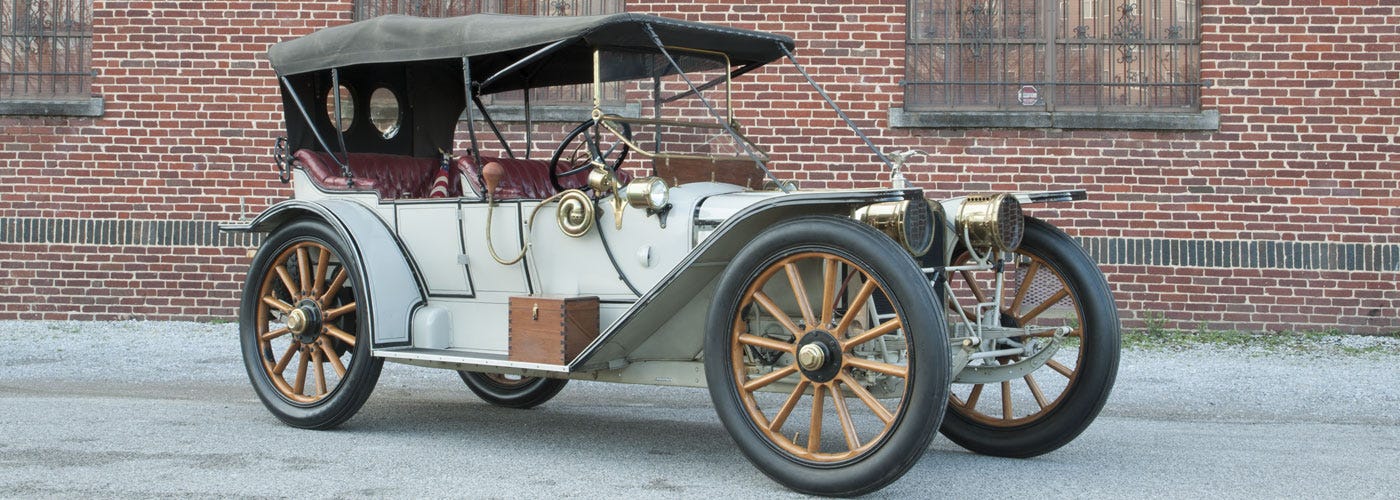 1913 American Underslung[/caption]
The Early Cars | 1890-1919
The cars and trucks from the earliest years of motoring are special. So many of the rules had yet to be written, even the roads themselves not yet developed. From �On which side does the steering wheel belong� to Chain drive verses closed differential design, automotive engineering was all over the place as manufacturers scrambled to build vehicles that were both functional and affordable and with far more style than you�d think. Henry Ford gets credit for figuring out how to build a whole bunch of them at an affordable price. As the automobile graduated from novelty to necessity, cost cutting and materials availability became an increasing concern. War efforts around the world taxed metal supplies as well, further pushing automotive manufacturing to adapt. Many of the early brass-clad beauties began to concede production volume to a more practical and affordable automobile. The motorcycles were very similar in their initial approach to motorized transportation, with both high end and affordable models being introduced to a (then) brand new consumer. Early autos and motorcycles enjoy an incredible fan base today. Many of these vehicles aren�t necessarily practical in the sense that they didn�t make hundreds of horsepower and couldn�t travel at speeds anywhere near today�s cars and bikes. They are highly prized still, in no small part due to their age and low parts availability. Many collectors enjoy the challenge of restoring a vehicle that doesn�t have a contemporary supply of spare parts. In many cases, limited resources and documentation creates a unique restoration process that sweetens the deal for enthusiasts. Once the cars are restored and shown, it�s worth it. Swap meet events like the powerhouse Fall Hershey meet, are a big deal for restorers and collectors on the hunt for rare original parts for these century-old vehicles.
[caption id="attachment_8063" align="aligncenter" width="1400"]
1913 American Underslung[/caption]
The Early Cars | 1890-1919
The cars and trucks from the earliest years of motoring are special. So many of the rules had yet to be written, even the roads themselves not yet developed. From �On which side does the steering wheel belong� to Chain drive verses closed differential design, automotive engineering was all over the place as manufacturers scrambled to build vehicles that were both functional and affordable and with far more style than you�d think. Henry Ford gets credit for figuring out how to build a whole bunch of them at an affordable price. As the automobile graduated from novelty to necessity, cost cutting and materials availability became an increasing concern. War efforts around the world taxed metal supplies as well, further pushing automotive manufacturing to adapt. Many of the early brass-clad beauties began to concede production volume to a more practical and affordable automobile. The motorcycles were very similar in their initial approach to motorized transportation, with both high end and affordable models being introduced to a (then) brand new consumer. Early autos and motorcycles enjoy an incredible fan base today. Many of these vehicles aren�t necessarily practical in the sense that they didn�t make hundreds of horsepower and couldn�t travel at speeds anywhere near today�s cars and bikes. They are highly prized still, in no small part due to their age and low parts availability. Many collectors enjoy the challenge of restoring a vehicle that doesn�t have a contemporary supply of spare parts. In many cases, limited resources and documentation creates a unique restoration process that sweetens the deal for enthusiasts. Once the cars are restored and shown, it�s worth it. Swap meet events like the powerhouse Fall Hershey meet, are a big deal for restorers and collectors on the hunt for rare original parts for these century-old vehicles.
[caption id="attachment_8063" align="aligncenter" width="1400"] 1930 Ford Model A[/caption]
The Antiques | 1920-1949
After World War I, cars and trucks really took some huge design leaps forward. As driving distances increased, so too did the need for more comfort and performance. Enclosed cabins, mass produced V8 engines and increasingly more reliable tires and wheels were just some of the improvements marking an era that was bookended by world wars. Affordability and mass production dominated these years as the number of manufacturers shrunk dramatically by the late forties. Collectors today enjoy a wide variety of (now) orphaned antique makes and models, especially from the years leading into the Great Depression. As with the earlier cars, many of the same restoration challenges exist with limited parts supplies, particularly for more obscure makes and models. Antique automobiles are extremely popular with the venerable Model T and Model A Fords chief among them. Motorcycles evolved nicely during this era as well, with handle bar and rider seating positions settling into a more contemporary setup. Engine power also increased, taking advantage of the ever-improving roadways in America.
[caption id="attachment_8064" align="aligncenter" width="1400"]
1930 Ford Model A[/caption]
The Antiques | 1920-1949
After World War I, cars and trucks really took some huge design leaps forward. As driving distances increased, so too did the need for more comfort and performance. Enclosed cabins, mass produced V8 engines and increasingly more reliable tires and wheels were just some of the improvements marking an era that was bookended by world wars. Affordability and mass production dominated these years as the number of manufacturers shrunk dramatically by the late forties. Collectors today enjoy a wide variety of (now) orphaned antique makes and models, especially from the years leading into the Great Depression. As with the earlier cars, many of the same restoration challenges exist with limited parts supplies, particularly for more obscure makes and models. Antique automobiles are extremely popular with the venerable Model T and Model A Fords chief among them. Motorcycles evolved nicely during this era as well, with handle bar and rider seating positions settling into a more contemporary setup. Engine power also increased, taking advantage of the ever-improving roadways in America.
[caption id="attachment_8064" align="aligncenter" width="1400"]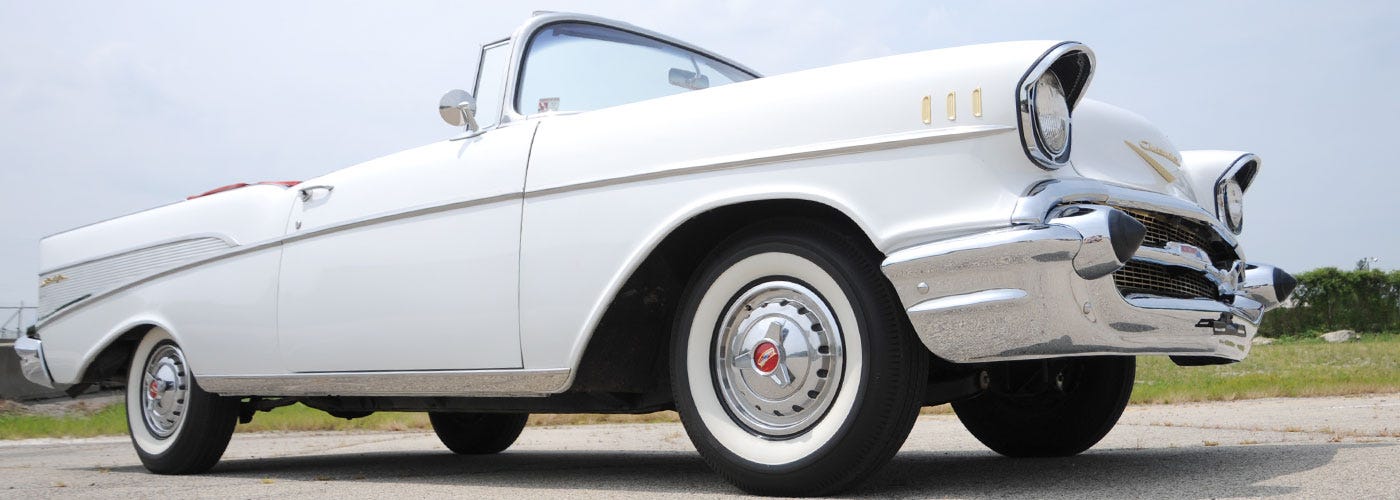 1957 Chevrolet Bel Air[/caption]
The Classics | 1950-1969
These were the cars that the Baby Boomer generation grew up in. Post-war America was all about road trip vacations in their cars. The roads were getting better and much greater travel distances were possible with the more reliable and powerful cars of the the fifties and sixties. Detroit, Michigan was now in a full scale arms race to build cars for every American. For collectors, these two decades represent a wide spectrum of vehicles from the shoe box cars of the fifties to street-stomping muscle cars of the sixties. From the Corvette�s appearance in 1953, to the iconic fifties Chevrolets in 1955-57, late 1950s Cadillacs, and the game-changing Mustang in 1964, the era of classics now represents a huge segment of the collector automobile hobby. As the impending fossil fuel crisis loomed overhead, the end of the classic auto era would meet many new faces. Miserly cars, trucks and motorcycles from Europe and Japan began to appear on American roads. Many popular makes and models from the fifties and sixties have their own devout enthusiast followings.
1957 Chevrolet Bel Air[/caption]
The Classics | 1950-1969
These were the cars that the Baby Boomer generation grew up in. Post-war America was all about road trip vacations in their cars. The roads were getting better and much greater travel distances were possible with the more reliable and powerful cars of the the fifties and sixties. Detroit, Michigan was now in a full scale arms race to build cars for every American. For collectors, these two decades represent a wide spectrum of vehicles from the shoe box cars of the fifties to street-stomping muscle cars of the sixties. From the Corvette�s appearance in 1953, to the iconic fifties Chevrolets in 1955-57, late 1950s Cadillacs, and the game-changing Mustang in 1964, the era of classics now represents a huge segment of the collector automobile hobby. As the impending fossil fuel crisis loomed overhead, the end of the classic auto era would meet many new faces. Miserly cars, trucks and motorcycles from Europe and Japan began to appear on American roads. Many popular makes and models from the fifties and sixties have their own devout enthusiast followings.
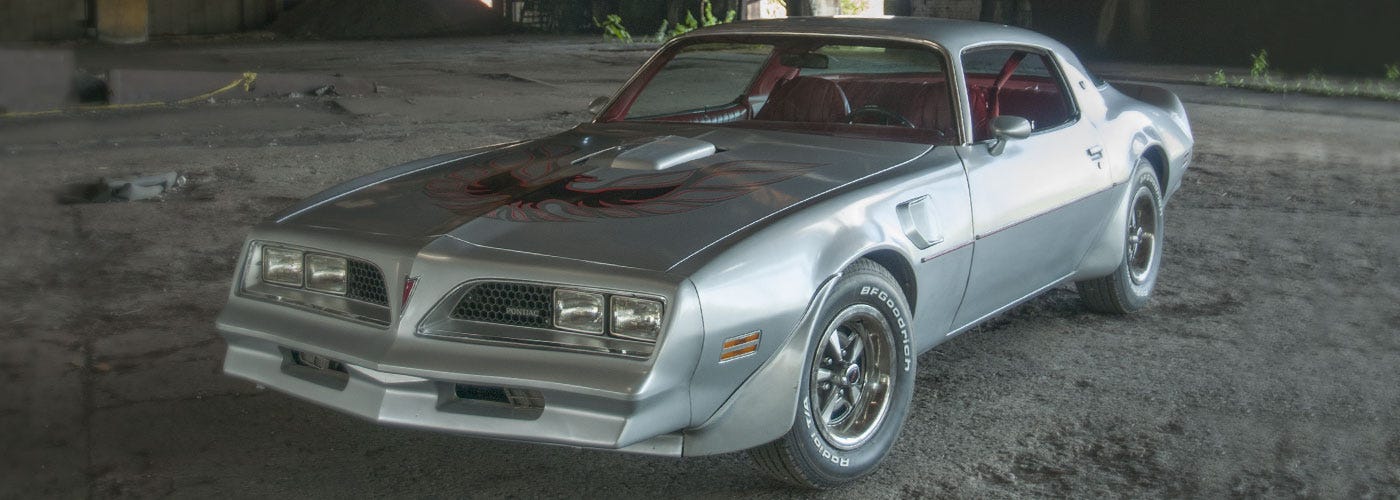 The Seventies, Man | 1970s
The future of fuel was uncertain and plastic was becoming a thing as we rolled into the seventies. The decade started pretty much where the sixties left off, but by the mid-seventies the game had completely changed for many popular makes and models in the United States. Horsepower figures spiraled downward as manufacturers tried to figure out fuel economy. Once considered forgettable, many of the mid-to-late seventies vehicles have started to appreciate in value. One surprising trend is the rise in popularity of vans from the seventies, particularly custom vans. Sometimes in the collector car world, weird wins. Motorcycles from the seventies have also surged in popularity, especially as a platform for custom builds. In a decade where most American automobile horsepower was declining quickly, the motorcycle industry was booming for imported models and there are still plenty of them around to buy.
[caption id="attachment_8066" align="aligncenter" width="1400"]
The Seventies, Man | 1970s
The future of fuel was uncertain and plastic was becoming a thing as we rolled into the seventies. The decade started pretty much where the sixties left off, but by the mid-seventies the game had completely changed for many popular makes and models in the United States. Horsepower figures spiraled downward as manufacturers tried to figure out fuel economy. Once considered forgettable, many of the mid-to-late seventies vehicles have started to appreciate in value. One surprising trend is the rise in popularity of vans from the seventies, particularly custom vans. Sometimes in the collector car world, weird wins. Motorcycles from the seventies have also surged in popularity, especially as a platform for custom builds. In a decade where most American automobile horsepower was declining quickly, the motorcycle industry was booming for imported models and there are still plenty of them around to buy.
[caption id="attachment_8066" align="aligncenter" width="1400"] 1985 Buick Grand National[/caption]
The New Classics | 1980s-1990s
OK, so many collectors might look the other way here, but hang on a minute! Let�s do some old car math� In the early eighties, a 1969 Camaro was on a dozen years old, or so. A 1980 Camaro is now 36 years old. 36 years!!! These cars have been seemingly slow to appreciate, and some would say with good reason, but prices on desirable models from the eighties have sneaked up on some of us. According to Hagerty�s valuation tool, an excellent condition 1980 Z/28 will now set you back over $21,000. An �86 IROC-Z is now a $13,000 car in the same condition. To be fair, a 1969 Z/28 is a $100,000 car these days, but you can�t compare rarefied muscle cars to virtually anything else in the collector market. It just isn�t an apples to apples comparison. Look at an excellent condition regular-old-350 Camaro from 1969 that is a now $34,000 car, and the going rate of an �80 model Z starts to look a little more interesting. We�ll see this more and more over the next decade as the eighties and nineties stuff start to earn their collector stripes. Even better, there are lots of survivors still out there that aren�t fetching so much money just yet. Don�t be so quick to laugh it off, these cars are collectible too, and maybe the best value out there right now. In 1990 alone you can consider the Corvette ZR-1, Nissan 300Zx Twin Turbo, the game changing Mazda MX-5 Miata and Acura�s NSX as significant icons of the era worth looking at. Motorcycles enjoyed the 80-90s as well, with legendary performance benchmarks and the birth of truly high performance bikes from the major Japanese manufacturers.
[caption id="attachment_8067" align="aligncenter" width="1400"]
1985 Buick Grand National[/caption]
The New Classics | 1980s-1990s
OK, so many collectors might look the other way here, but hang on a minute! Let�s do some old car math� In the early eighties, a 1969 Camaro was on a dozen years old, or so. A 1980 Camaro is now 36 years old. 36 years!!! These cars have been seemingly slow to appreciate, and some would say with good reason, but prices on desirable models from the eighties have sneaked up on some of us. According to Hagerty�s valuation tool, an excellent condition 1980 Z/28 will now set you back over $21,000. An �86 IROC-Z is now a $13,000 car in the same condition. To be fair, a 1969 Z/28 is a $100,000 car these days, but you can�t compare rarefied muscle cars to virtually anything else in the collector market. It just isn�t an apples to apples comparison. Look at an excellent condition regular-old-350 Camaro from 1969 that is a now $34,000 car, and the going rate of an �80 model Z starts to look a little more interesting. We�ll see this more and more over the next decade as the eighties and nineties stuff start to earn their collector stripes. Even better, there are lots of survivors still out there that aren�t fetching so much money just yet. Don�t be so quick to laugh it off, these cars are collectible too, and maybe the best value out there right now. In 1990 alone you can consider the Corvette ZR-1, Nissan 300Zx Twin Turbo, the game changing Mazda MX-5 Miata and Acura�s NSX as significant icons of the era worth looking at. Motorcycles enjoyed the 80-90s as well, with legendary performance benchmarks and the birth of truly high performance bikes from the major Japanese manufacturers.
[caption id="attachment_8067" align="aligncenter" width="1400"]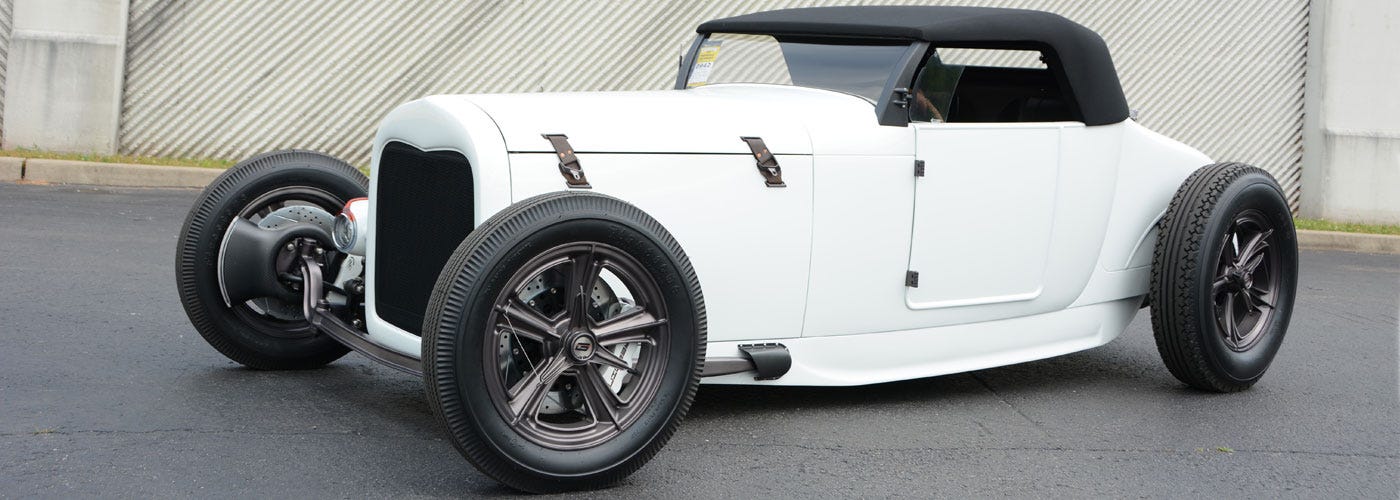 Greening Roadster[/caption]
Breaking the Mold | A Long History of Customization Briefly
It�s not really surprising that as soon as we figured out motorized transportation, we started customizing it. In many ways every car was a hot rod in the late 1800�s. They were wild creations built by the hands of visionaries who simply refused to settle for what they had. Pretty much every step of the way since, there have been race cars, hot rods and wildly customized automobiles. When you look at the collector landscape, you see pockets of interest that rise above the rest. Traditional hot rod/ dry lakes racers are hot, inspiring builds even today. Going fast isn�t the only way to go, though. Lowriders and luxury cars always draw a crowd too, but it�s hard to deny the boy racer�s influence on custom automobiles through the years. Everything from old school hot rods to mini trucks of the eighties live outside of the standard restoration market and have built their own cult followings each. Many believe the custom world drives industry trends, influencing everything from color to ride height. This segment is an extremely diverse crowd, but they all have one thing in common, stock isn�t good enough.
[caption id="attachment_8068" align="aligncenter" width="1400"]
Greening Roadster[/caption]
Breaking the Mold | A Long History of Customization Briefly
It�s not really surprising that as soon as we figured out motorized transportation, we started customizing it. In many ways every car was a hot rod in the late 1800�s. They were wild creations built by the hands of visionaries who simply refused to settle for what they had. Pretty much every step of the way since, there have been race cars, hot rods and wildly customized automobiles. When you look at the collector landscape, you see pockets of interest that rise above the rest. Traditional hot rod/ dry lakes racers are hot, inspiring builds even today. Going fast isn�t the only way to go, though. Lowriders and luxury cars always draw a crowd too, but it�s hard to deny the boy racer�s influence on custom automobiles through the years. Everything from old school hot rods to mini trucks of the eighties live outside of the standard restoration market and have built their own cult followings each. Many believe the custom world drives industry trends, influencing everything from color to ride height. This segment is an extremely diverse crowd, but they all have one thing in common, stock isn�t good enough.
[caption id="attachment_8068" align="aligncenter" width="1400"]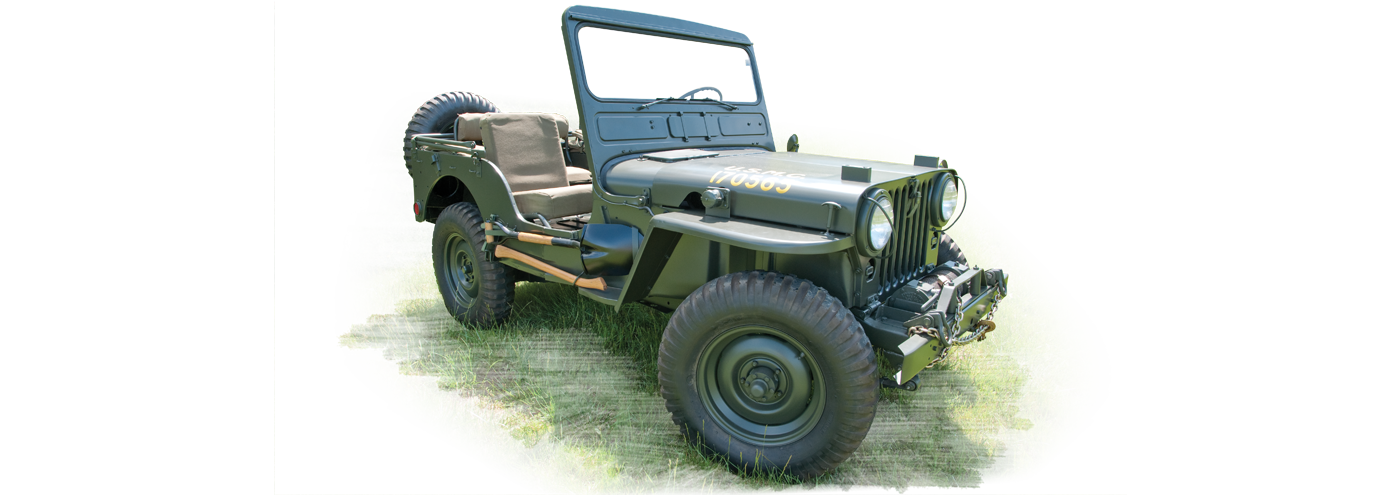 Restored Military Jeep[/caption]
At Your Service | Working Class Collectibles
Last but certainly not least are the service vehicles. From the very beginning, automobiles have been doing work for America. From hauling dirt to carrying the mail (literally), these working class heroes are just as collectible, if not always worth a bunch of money. Military vehicles, fire trucks, hearses and even old mail trucks are lovingly cared for and often find a place in parades and public celebrations to show off their rugged good looks. There's something charming about an old workhorse coming out of retirement and there are always plenty of fans out there to appreciate them.
Restored Military Jeep[/caption]
At Your Service | Working Class Collectibles
Last but certainly not least are the service vehicles. From the very beginning, automobiles have been doing work for America. From hauling dirt to carrying the mail (literally), these working class heroes are just as collectible, if not always worth a bunch of money. Military vehicles, fire trucks, hearses and even old mail trucks are lovingly cared for and often find a place in parades and public celebrations to show off their rugged good looks. There's something charming about an old workhorse coming out of retirement and there are always plenty of fans out there to appreciate them.
 1913 American Underslung[/caption]
The Early Cars | 1890-1919
The cars and trucks from the earliest years of motoring are special. So many of the rules had yet to be written, even the roads themselves not yet developed. From �On which side does the steering wheel belong� to Chain drive verses closed differential design, automotive engineering was all over the place as manufacturers scrambled to build vehicles that were both functional and affordable and with far more style than you�d think. Henry Ford gets credit for figuring out how to build a whole bunch of them at an affordable price. As the automobile graduated from novelty to necessity, cost cutting and materials availability became an increasing concern. War efforts around the world taxed metal supplies as well, further pushing automotive manufacturing to adapt. Many of the early brass-clad beauties began to concede production volume to a more practical and affordable automobile. The motorcycles were very similar in their initial approach to motorized transportation, with both high end and affordable models being introduced to a (then) brand new consumer. Early autos and motorcycles enjoy an incredible fan base today. Many of these vehicles aren�t necessarily practical in the sense that they didn�t make hundreds of horsepower and couldn�t travel at speeds anywhere near today�s cars and bikes. They are highly prized still, in no small part due to their age and low parts availability. Many collectors enjoy the challenge of restoring a vehicle that doesn�t have a contemporary supply of spare parts. In many cases, limited resources and documentation creates a unique restoration process that sweetens the deal for enthusiasts. Once the cars are restored and shown, it�s worth it. Swap meet events like the powerhouse Fall Hershey meet, are a big deal for restorers and collectors on the hunt for rare original parts for these century-old vehicles.
[caption id="attachment_8063" align="aligncenter" width="1400"]
1913 American Underslung[/caption]
The Early Cars | 1890-1919
The cars and trucks from the earliest years of motoring are special. So many of the rules had yet to be written, even the roads themselves not yet developed. From �On which side does the steering wheel belong� to Chain drive verses closed differential design, automotive engineering was all over the place as manufacturers scrambled to build vehicles that were both functional and affordable and with far more style than you�d think. Henry Ford gets credit for figuring out how to build a whole bunch of them at an affordable price. As the automobile graduated from novelty to necessity, cost cutting and materials availability became an increasing concern. War efforts around the world taxed metal supplies as well, further pushing automotive manufacturing to adapt. Many of the early brass-clad beauties began to concede production volume to a more practical and affordable automobile. The motorcycles were very similar in their initial approach to motorized transportation, with both high end and affordable models being introduced to a (then) brand new consumer. Early autos and motorcycles enjoy an incredible fan base today. Many of these vehicles aren�t necessarily practical in the sense that they didn�t make hundreds of horsepower and couldn�t travel at speeds anywhere near today�s cars and bikes. They are highly prized still, in no small part due to their age and low parts availability. Many collectors enjoy the challenge of restoring a vehicle that doesn�t have a contemporary supply of spare parts. In many cases, limited resources and documentation creates a unique restoration process that sweetens the deal for enthusiasts. Once the cars are restored and shown, it�s worth it. Swap meet events like the powerhouse Fall Hershey meet, are a big deal for restorers and collectors on the hunt for rare original parts for these century-old vehicles.
[caption id="attachment_8063" align="aligncenter" width="1400"] 1930 Ford Model A[/caption]
The Antiques | 1920-1949
After World War I, cars and trucks really took some huge design leaps forward. As driving distances increased, so too did the need for more comfort and performance. Enclosed cabins, mass produced V8 engines and increasingly more reliable tires and wheels were just some of the improvements marking an era that was bookended by world wars. Affordability and mass production dominated these years as the number of manufacturers shrunk dramatically by the late forties. Collectors today enjoy a wide variety of (now) orphaned antique makes and models, especially from the years leading into the Great Depression. As with the earlier cars, many of the same restoration challenges exist with limited parts supplies, particularly for more obscure makes and models. Antique automobiles are extremely popular with the venerable Model T and Model A Fords chief among them. Motorcycles evolved nicely during this era as well, with handle bar and rider seating positions settling into a more contemporary setup. Engine power also increased, taking advantage of the ever-improving roadways in America.
[caption id="attachment_8064" align="aligncenter" width="1400"]
1930 Ford Model A[/caption]
The Antiques | 1920-1949
After World War I, cars and trucks really took some huge design leaps forward. As driving distances increased, so too did the need for more comfort and performance. Enclosed cabins, mass produced V8 engines and increasingly more reliable tires and wheels were just some of the improvements marking an era that was bookended by world wars. Affordability and mass production dominated these years as the number of manufacturers shrunk dramatically by the late forties. Collectors today enjoy a wide variety of (now) orphaned antique makes and models, especially from the years leading into the Great Depression. As with the earlier cars, many of the same restoration challenges exist with limited parts supplies, particularly for more obscure makes and models. Antique automobiles are extremely popular with the venerable Model T and Model A Fords chief among them. Motorcycles evolved nicely during this era as well, with handle bar and rider seating positions settling into a more contemporary setup. Engine power also increased, taking advantage of the ever-improving roadways in America.
[caption id="attachment_8064" align="aligncenter" width="1400"] 1957 Chevrolet Bel Air[/caption]
The Classics | 1950-1969
These were the cars that the Baby Boomer generation grew up in. Post-war America was all about road trip vacations in their cars. The roads were getting better and much greater travel distances were possible with the more reliable and powerful cars of the the fifties and sixties. Detroit, Michigan was now in a full scale arms race to build cars for every American. For collectors, these two decades represent a wide spectrum of vehicles from the shoe box cars of the fifties to street-stomping muscle cars of the sixties. From the Corvette�s appearance in 1953, to the iconic fifties Chevrolets in 1955-57, late 1950s Cadillacs, and the game-changing Mustang in 1964, the era of classics now represents a huge segment of the collector automobile hobby. As the impending fossil fuel crisis loomed overhead, the end of the classic auto era would meet many new faces. Miserly cars, trucks and motorcycles from Europe and Japan began to appear on American roads. Many popular makes and models from the fifties and sixties have their own devout enthusiast followings.
1957 Chevrolet Bel Air[/caption]
The Classics | 1950-1969
These were the cars that the Baby Boomer generation grew up in. Post-war America was all about road trip vacations in their cars. The roads were getting better and much greater travel distances were possible with the more reliable and powerful cars of the the fifties and sixties. Detroit, Michigan was now in a full scale arms race to build cars for every American. For collectors, these two decades represent a wide spectrum of vehicles from the shoe box cars of the fifties to street-stomping muscle cars of the sixties. From the Corvette�s appearance in 1953, to the iconic fifties Chevrolets in 1955-57, late 1950s Cadillacs, and the game-changing Mustang in 1964, the era of classics now represents a huge segment of the collector automobile hobby. As the impending fossil fuel crisis loomed overhead, the end of the classic auto era would meet many new faces. Miserly cars, trucks and motorcycles from Europe and Japan began to appear on American roads. Many popular makes and models from the fifties and sixties have their own devout enthusiast followings.
 The Seventies, Man | 1970s
The future of fuel was uncertain and plastic was becoming a thing as we rolled into the seventies. The decade started pretty much where the sixties left off, but by the mid-seventies the game had completely changed for many popular makes and models in the United States. Horsepower figures spiraled downward as manufacturers tried to figure out fuel economy. Once considered forgettable, many of the mid-to-late seventies vehicles have started to appreciate in value. One surprising trend is the rise in popularity of vans from the seventies, particularly custom vans. Sometimes in the collector car world, weird wins. Motorcycles from the seventies have also surged in popularity, especially as a platform for custom builds. In a decade where most American automobile horsepower was declining quickly, the motorcycle industry was booming for imported models and there are still plenty of them around to buy.
[caption id="attachment_8066" align="aligncenter" width="1400"]
The Seventies, Man | 1970s
The future of fuel was uncertain and plastic was becoming a thing as we rolled into the seventies. The decade started pretty much where the sixties left off, but by the mid-seventies the game had completely changed for many popular makes and models in the United States. Horsepower figures spiraled downward as manufacturers tried to figure out fuel economy. Once considered forgettable, many of the mid-to-late seventies vehicles have started to appreciate in value. One surprising trend is the rise in popularity of vans from the seventies, particularly custom vans. Sometimes in the collector car world, weird wins. Motorcycles from the seventies have also surged in popularity, especially as a platform for custom builds. In a decade where most American automobile horsepower was declining quickly, the motorcycle industry was booming for imported models and there are still plenty of them around to buy.
[caption id="attachment_8066" align="aligncenter" width="1400"] 1985 Buick Grand National[/caption]
The New Classics | 1980s-1990s
OK, so many collectors might look the other way here, but hang on a minute! Let�s do some old car math� In the early eighties, a 1969 Camaro was on a dozen years old, or so. A 1980 Camaro is now 36 years old. 36 years!!! These cars have been seemingly slow to appreciate, and some would say with good reason, but prices on desirable models from the eighties have sneaked up on some of us. According to Hagerty�s valuation tool, an excellent condition 1980 Z/28 will now set you back over $21,000. An �86 IROC-Z is now a $13,000 car in the same condition. To be fair, a 1969 Z/28 is a $100,000 car these days, but you can�t compare rarefied muscle cars to virtually anything else in the collector market. It just isn�t an apples to apples comparison. Look at an excellent condition regular-old-350 Camaro from 1969 that is a now $34,000 car, and the going rate of an �80 model Z starts to look a little more interesting. We�ll see this more and more over the next decade as the eighties and nineties stuff start to earn their collector stripes. Even better, there are lots of survivors still out there that aren�t fetching so much money just yet. Don�t be so quick to laugh it off, these cars are collectible too, and maybe the best value out there right now. In 1990 alone you can consider the Corvette ZR-1, Nissan 300Zx Twin Turbo, the game changing Mazda MX-5 Miata and Acura�s NSX as significant icons of the era worth looking at. Motorcycles enjoyed the 80-90s as well, with legendary performance benchmarks and the birth of truly high performance bikes from the major Japanese manufacturers.
[caption id="attachment_8067" align="aligncenter" width="1400"]
1985 Buick Grand National[/caption]
The New Classics | 1980s-1990s
OK, so many collectors might look the other way here, but hang on a minute! Let�s do some old car math� In the early eighties, a 1969 Camaro was on a dozen years old, or so. A 1980 Camaro is now 36 years old. 36 years!!! These cars have been seemingly slow to appreciate, and some would say with good reason, but prices on desirable models from the eighties have sneaked up on some of us. According to Hagerty�s valuation tool, an excellent condition 1980 Z/28 will now set you back over $21,000. An �86 IROC-Z is now a $13,000 car in the same condition. To be fair, a 1969 Z/28 is a $100,000 car these days, but you can�t compare rarefied muscle cars to virtually anything else in the collector market. It just isn�t an apples to apples comparison. Look at an excellent condition regular-old-350 Camaro from 1969 that is a now $34,000 car, and the going rate of an �80 model Z starts to look a little more interesting. We�ll see this more and more over the next decade as the eighties and nineties stuff start to earn their collector stripes. Even better, there are lots of survivors still out there that aren�t fetching so much money just yet. Don�t be so quick to laugh it off, these cars are collectible too, and maybe the best value out there right now. In 1990 alone you can consider the Corvette ZR-1, Nissan 300Zx Twin Turbo, the game changing Mazda MX-5 Miata and Acura�s NSX as significant icons of the era worth looking at. Motorcycles enjoyed the 80-90s as well, with legendary performance benchmarks and the birth of truly high performance bikes from the major Japanese manufacturers.
[caption id="attachment_8067" align="aligncenter" width="1400"] Greening Roadster[/caption]
Breaking the Mold | A Long History of Customization Briefly
It�s not really surprising that as soon as we figured out motorized transportation, we started customizing it. In many ways every car was a hot rod in the late 1800�s. They were wild creations built by the hands of visionaries who simply refused to settle for what they had. Pretty much every step of the way since, there have been race cars, hot rods and wildly customized automobiles. When you look at the collector landscape, you see pockets of interest that rise above the rest. Traditional hot rod/ dry lakes racers are hot, inspiring builds even today. Going fast isn�t the only way to go, though. Lowriders and luxury cars always draw a crowd too, but it�s hard to deny the boy racer�s influence on custom automobiles through the years. Everything from old school hot rods to mini trucks of the eighties live outside of the standard restoration market and have built their own cult followings each. Many believe the custom world drives industry trends, influencing everything from color to ride height. This segment is an extremely diverse crowd, but they all have one thing in common, stock isn�t good enough.
[caption id="attachment_8068" align="aligncenter" width="1400"]
Greening Roadster[/caption]
Breaking the Mold | A Long History of Customization Briefly
It�s not really surprising that as soon as we figured out motorized transportation, we started customizing it. In many ways every car was a hot rod in the late 1800�s. They were wild creations built by the hands of visionaries who simply refused to settle for what they had. Pretty much every step of the way since, there have been race cars, hot rods and wildly customized automobiles. When you look at the collector landscape, you see pockets of interest that rise above the rest. Traditional hot rod/ dry lakes racers are hot, inspiring builds even today. Going fast isn�t the only way to go, though. Lowriders and luxury cars always draw a crowd too, but it�s hard to deny the boy racer�s influence on custom automobiles through the years. Everything from old school hot rods to mini trucks of the eighties live outside of the standard restoration market and have built their own cult followings each. Many believe the custom world drives industry trends, influencing everything from color to ride height. This segment is an extremely diverse crowd, but they all have one thing in common, stock isn�t good enough.
[caption id="attachment_8068" align="aligncenter" width="1400"] Restored Military Jeep[/caption]
At Your Service | Working Class Collectibles
Last but certainly not least are the service vehicles. From the very beginning, automobiles have been doing work for America. From hauling dirt to carrying the mail (literally), these working class heroes are just as collectible, if not always worth a bunch of money. Military vehicles, fire trucks, hearses and even old mail trucks are lovingly cared for and often find a place in parades and public celebrations to show off their rugged good looks. There's something charming about an old workhorse coming out of retirement and there are always plenty of fans out there to appreciate them.
Restored Military Jeep[/caption]
At Your Service | Working Class Collectibles
Last but certainly not least are the service vehicles. From the very beginning, automobiles have been doing work for America. From hauling dirt to carrying the mail (literally), these working class heroes are just as collectible, if not always worth a bunch of money. Military vehicles, fire trucks, hearses and even old mail trucks are lovingly cared for and often find a place in parades and public celebrations to show off their rugged good looks. There's something charming about an old workhorse coming out of retirement and there are always plenty of fans out there to appreciate them.
